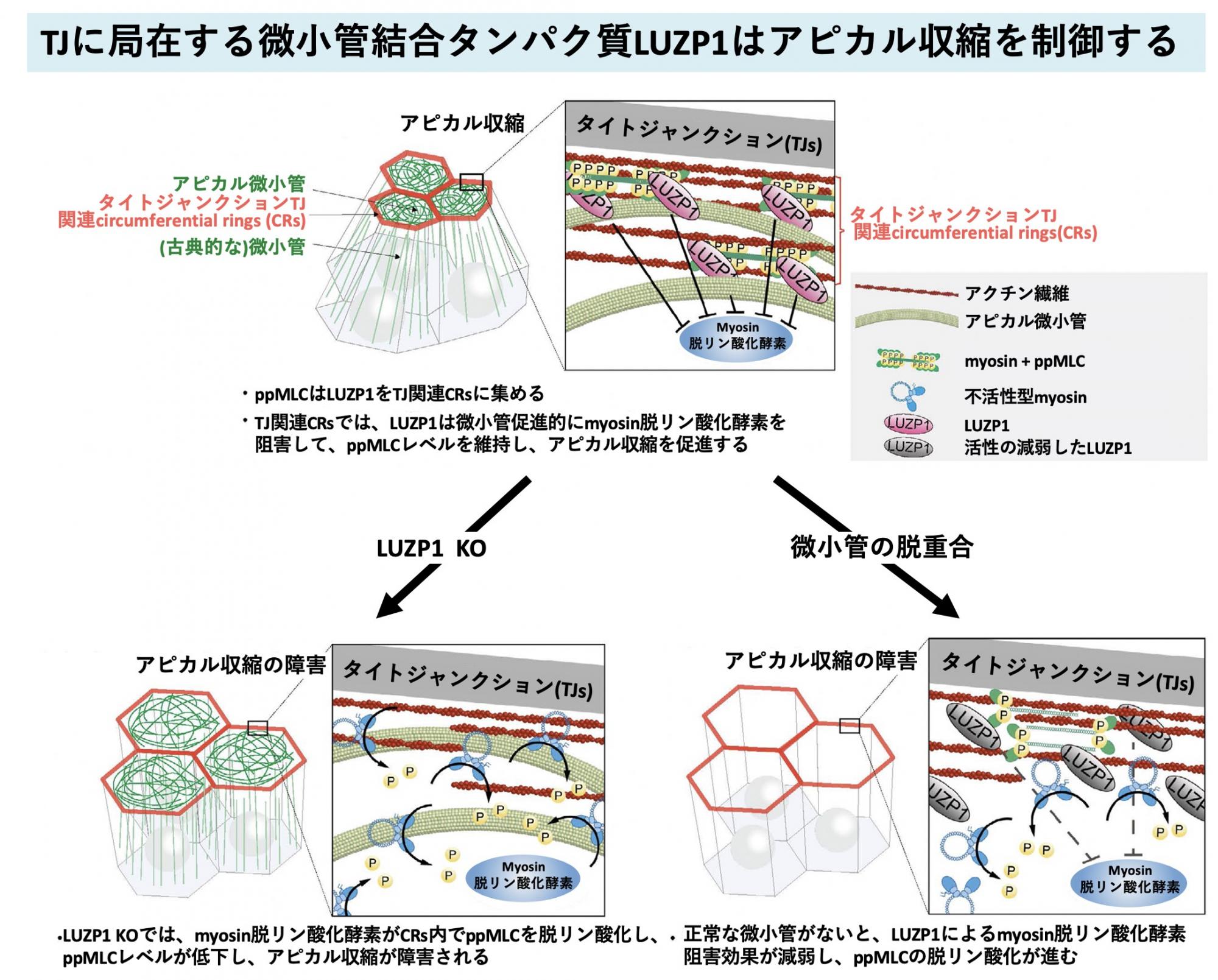FBS Colloquia No.263Laboratory of Barriology and Cell Biology
| Seminar or Lecture |
Planar cell polarity generates local microtubule bundling for coordinated ciliary beating Shogo Nakayama [FBS PhD student(D4/D5) /Laboratory of Barriology and Cell Biology)] A microtubule-LUZP1 association around tight junction promotes epithelial cell apical constriction Tomoki Yano [Assistant professor /Laboratory of Barriology and Cell Biology] |
|---|---|
| Date and Time | 28 Jan. (Thu), 2021 |
| Place | Online (Zoom) | An email will be sent with the meeting URL, ID, and password on the morning of each colloquium. |
| Language | Japanese |
| Contact |
Name:Atsushi Tamura |
Planar cell polarity generates local microtubule bundling for coordinated ciliary beating
Multi-ciliated cells (MCCs) generate mucociliary clearance through coordinated ciliary beating. Apical microtubules (MTs) play a crucial role in this process by organizing the planar cell polarity (PCP)-dependent orientation of ciliary basal bodies (BBs), for which the underlying molecular basis remains elusive. Using Ex vivo live cell imaging and single molecule imaging, we have analyzed the mechanism of MTs organization in tracheal MCCs. Herein, we will present our current understanding about the mechanism of apical MTs organization through the PCP adaptor Daple.
A microtubule-LUZP1 association around tight junction promotes epithelial cell apical constriction
Apical constriction is critical for epithelial morphogenesis, including neural tube formation. Vertebrate apical constriction is induced by di‐phosphorylated myosin light chain (ppMLC)‐driven contraction of actomyosin‐based circumferential rings (CRs), also known as perijunctional actomyosin rings, around apical junctional complexes (AJCs), mainly consisting of tight junctions (TJs) and adherens junctions (AJs). The apical MTs, which are different from classical apicobasal MTs, are reportedly associated with TJs in a side‐by‐side manner, in a variety of epithelial cells. To further elucidate the role of MTs in cell–cell junctions, we conducted unbiased screening for MT‐associated proteins in an AJC‐enriched fraction and identified LUZP1. LUZP1 was previously proposed to play an important role in apical constriction because its KO leads to cranial NTDs in mice through an unidentified mechanism. In this colloquium, I would like to introduce and discuss the crucial molecular mechanism at CRs around TJs for apical constriction involving LUZP1 and MTs.

